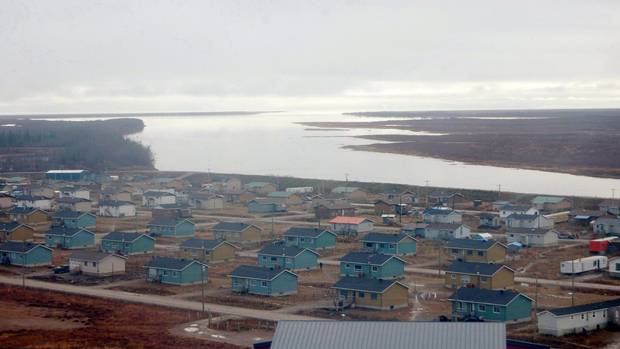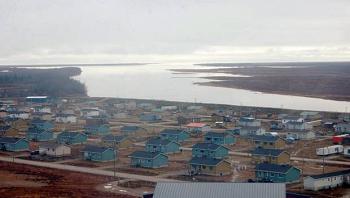Kids in Northern Ontario First Nation evacuated due to rashes, open sores
Children covered in sores and rashes in an Ontario First Nation are the face of a much broader health crisis faced by aboriginal communities across the country, says Charlie Angus, the NDP indigenous affairs critic.
Angus joined ministerial officials and aboriginal leaders for a conference call Monday to discuss why some children in Kashechewan First Nation have developed unusual rashes and, in extreme causes, painful sores on their bodies.
The call came after images of the children were shared widely on social media over the weekend.
“The pictures of those children were so shocking and so heartbreaking that it woke Canadians up across the country,” Angus said.
“They were saying ‘what the hell is happening in our country that children are getting sick like this?’ These children really are the face of a much larger systemic crisis that is facing northern First Nation communities.”
Angus, whose riding includes the long-troubled reserve, said three children have been evacuated from the community while another 13 are expected to be removed by officials for further examination and possible treatment.
Health Canada has not yet confirmed when the evacuations will take place.
Doctors are also expected to be sent into the community from Moosonee, Ont. to conduct door-to-door visits and determine if other children are developing similar symptoms.
Health Minister Jane Philpott addressed the Kashechewan cases outside the Commons on Monday.
The children in the community are not suffering from a water-related condition, she said.
“It is our understanding that that is not the case,” Philpott said.
“In fact, the water has been tested as recently as last Tuesday and we know that it meets all of the appropriate standards for safety and drinking water and water to be used for other purposes.”
Philpott said she could not speak to specifics due to confidentiality concerns but stressed that all children who require care will be evacuated if necessary.
“I can say that all of the children who are requiring care are getting the care that they need,” she said.
Nishnawbe Aski Nation Grand Chief Alvin Fiddler said the situation in Kashechewan speaks to why northern Ontario First Nations leaders decided to declare a public health emergency last month.
Fiddler, who was also on Monday’s conference call, said he heard a message from officials focused only on short-term problems.
He said the government needs to also tackle broader systemic issues, such as a lack of clean drinking water, proper housing and possible mould issues, to determine why health problems are plaguing reserves.
“It was good to hear government officials commit to getting these children out for an assessment and hopefully treatment,” Fiddler said.
“We also need to look at the longer term … some of the determinants of health: housing, water, and education, everything else that contributes to the health and well-being of our families.”
Fiddler also said he is still waiting to hear from Philpott in response to the public health emergency.
“Here we are a month after our declaration was issued and we are still trying to confirm meetings with the federal Health Minister,” he said. “Meanwhile, things are deteriorating.”
When the emergency was declared, the Ontario First Nation leaders called on governments to respond within 90 days and to meet the chiefs to develop a detailed intervention plan.
During question period on Monday, Prime Minister Justin Trudeau signalled Tuesday’s budget will contain “historic” investments to address indigenous issues.
The fiscal blueprint is largely expected to be a litmus test of the government’s commitment to tackling long-standing challenges including housing, drinking water and education.
Trudeau has maintained no relationship is more important to him than the one with aboriginal peoples.
Comments
There are 0 comments on this post













